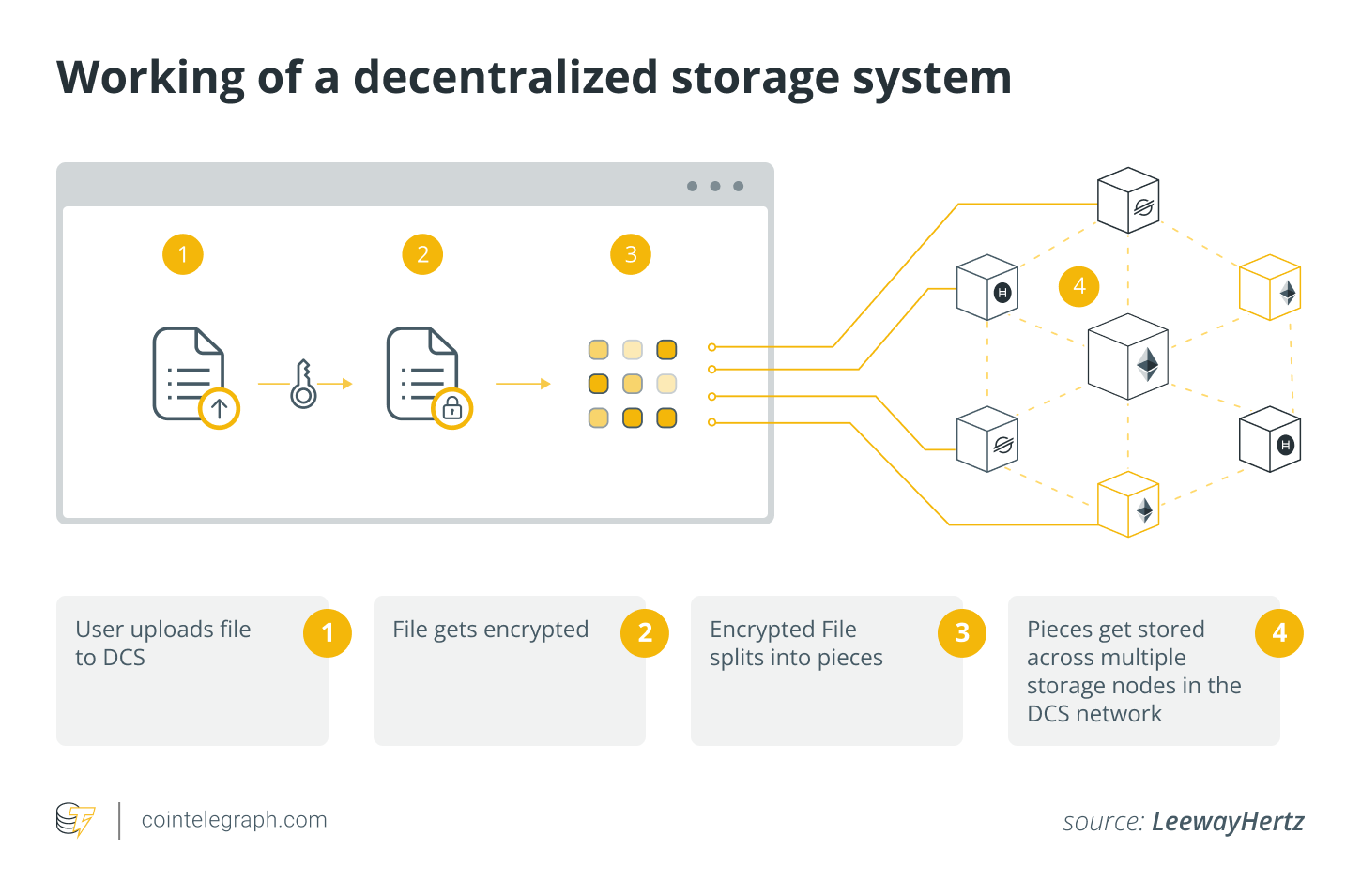
Academic institutions house some of the world’s most important data generated from years of research. Yet centralized data storage models are becoming a concern for many universities looking to keep critical information safe and accessible.
Danny O’Brien, a senior fellow at the Filecoin Foundation and Filecoin Foundation for the Decentralized Web (FFDW) — an independent organization that facilitates governance of the Filecoin network and funds development projects — told Cointelegraph that data stored by academic institutions is at risk of vanishing due to centralized storage models. To put this in perspective, a recent Filecoin Foundation survey found that 71% of Americans have lost information and records due to challenges like deleted hyperlinks or locked online accounts.
Decentralized storage helps secure and distribute data
To combat this, O’Brien explained that a handful of educational institutions have begun using decentralized data storage models to preserve data sets. “A growing number of higher education institutions, including the Massachusetts Institute of Technology (MIT), Harvard University, the University of California, Berkeley, Stanford University, the University of South Carolina, and others, are all using Filecoin to store, preserve and archive their most important data on the blockchain,” he said.
For example, O’Brien pointed out that MIT is currently working on a three-year project with the FFDW to explore how decentralized technology can support its Open Learning programs. MIT’s Open Learning programs include “OpenCourseWare,” which is designed to provide free online materials from over 2,500 MIT courses. This will allow anyone worldwide to access MIT courses on the internet.
O’Brien explained that through the support of the FFDW, MIT’s Open Learning programs will use decentralized storage to house cataloging, while preserving its OpenCourseWare materials. He added that MIT would soon host public seminars about the challenges and opportunities of the decentralized web. “Education’s ongoing embrace of decentralized Web3 data storage offers, via cryptographic proof, a guarantee that data remains available and unchanged over time, preserving their critical data for as long as they want,” he said.
The University of Utah also uses decentralized storage to protect and democratize access to large data sets. Valerio Pascucci, professor of computer science at the university, told Cointelegraph that the institution’s Center for Extreme Data Management Analysis and Visualization recently adopted a solution from Seal Storage — a decentralized cloud storage platform powered by Filecoin — to complement its current centralized infrastructure.
Pascucci explained that the model provided by Seal Storage allows the National Science Data Fabric (NSDF) — a pilot program working with institutions to democratize data — to further its goal of creating new mechanisms for easy access to scientific information.
“Traditionally, Minority Serving Institutions (MSIs), small colleges and other disadvantaged organizations cannot be part of scientific investigation endeavors because they cannot access the data necessary to do the work,” he mentioned. The NSDF’s use of decentralized storage will change that.
According to Pascucci, the NSDF-Seal Storage partnership has already demonstrated the possibility of distributing massive data collections to different communities without needing to deploy special servers or other complex processing capabilities that may be impractical for many institutions.
“For example, NASA stores on its largest supercomputer, ‘Pleiades,’ an open climate data set that is over 3 petabytes in size. Yet anyone who wants to use the data would need to have a special account on Pleiades and require the training needed to process the data,” he explained, “NSDF has adopted an ‘OpenVisus’ approach that has reorganized NASA’s data so that its distribution through decentralized storage allows for interactive processing and exploration virtually without any local resources.”
Pascucci added that this might be the first time a data set of this size has been made available for interactive exploration directly from the cloud. Moreover, he believes that the decentralized approach has enhanced security.
Decentralized storage is beneficial, but challenges remain
Although several universities have begun leveraging decentralized storage models, challenges that may hamper adoption remain.For example, Pascucci pointed out that to distribute NASA’s open climate data set, NSDF’s OpenVisus data format had to be extended from traditional file systems to meet the storage model provided by Seal Storage. Jacques Swanepoel, chief technology officer at Seal Storage, told Cointelegraph that mapping and tagging data on the blockchain is a very complicated undertaking.
“Identifying which block on the blockchain contains specific information is key to fully utilizing the benefits of decentralized storage technology. In order to overcome these challenges, providers need to properly track where customer data is on the blockchain with creative software strategies.”Yet it remains notable that academic institutions are using decentralized storage models. “Often considered slow-moving, academia has proven to be an early adopter of blockchain-based technologies, including decentralized storage, and continues to be a leader in adopting and deploying these tools,” O’Brien said.
This may very well be the case, as Pascucci shared that The University of Utah and NSDF are working on implementing additional use cases with different universities.
“While the NASA use case is very high profile both for size and application to the important field of global climate change, we are already working on other use cases, including the experimental facility of the Cornell High Energy Synchrotron Source. This is where thousands of scientists go every year to collect data and share it with collaborators across the nation,” he said.




